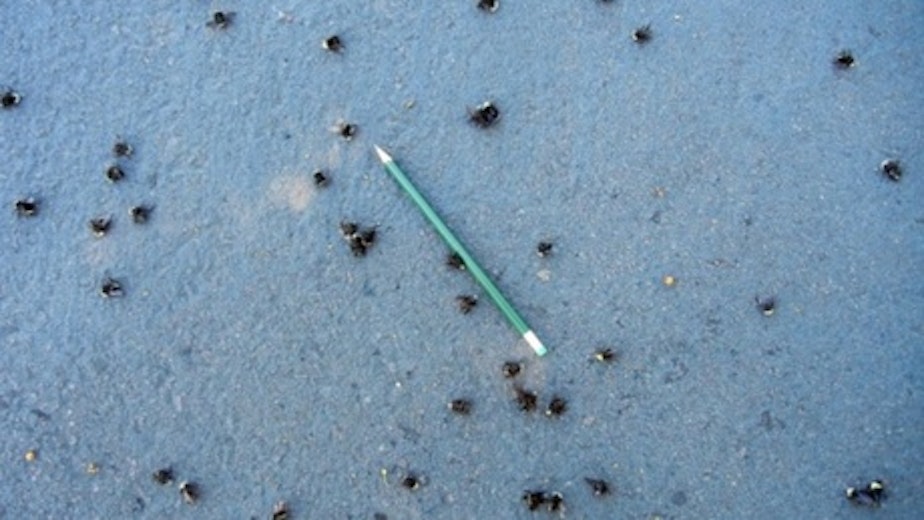Oregon Restricts Pesticides Responsible For Bee Die-Offs

The Oregon Department of Agriculture is restricting the use of two pesticide ingredients implicated in the deaths of more than 50,000 bumble bees earlier this year.
The restrictions apply to the pesticide ingredients dinotefuran and imidicloprid. Officials say they believe those ingredients – when sprayed on trees that have their own natural toxicity – become fatally toxic to bees and other pollinators.
To prevent more bee kills, Oregon is prohibiting the use of products containing those two ingredients on linden trees, basswood and other Tilia species that have similar natural toxins. The products will have to be labeled with the restriction before they can be sold in Oregon.
Oregon is the first state to take this step, according to Oregon Department of Agriculture spokesman Bruce Pokarney. His agency is also asking the Environmental Protection Agency to consider similar restrictions nationwide.
“We’re the state that experienced the massive bee deaths this summer,” Pokarney said. “We think this is a well-reasoned approach to at least trying to mitigate the circumstances that led to the bee deaths.”
ODA is also launching a public education campaign on protecting pollinators, and it will emphasize the issue in the required testing and re-certification process for licensed pesticide applicators.
Dinotefuran and imidacloprid are classified as neonicotinoid pesticides, which are controversial because some studies show they are toxic to bees.
